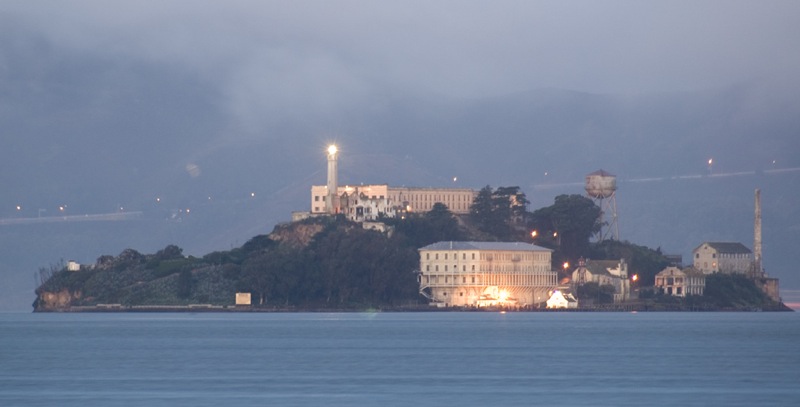Alcatraz: Giving new meaning to solar 'cells'


"Bright, shiny, clean." Not the three words you'd come up with to describe Alcatraz.
In fact, they kind of ruin the tone for a place we want to think of as "dark, foreboding, gloomy." Alcatraz - the notorious prison set on a craggy island in the frigid waters of San Francisco Bay - occupies that place in our psyche that we curiously reserve for creepiness. No one ever successfully escaped The Rock (except for maybe three guys in 1962 in an unresolved caper that was as much Ferris Bueller as it was Al Capone). If you even tried, the frigid, treacherous waters would kill you, if the sharks didn't - and all that stuff of lore.
That's how we like the place, now operated by the U.S. National Park Service as a sort of Mecca for the morbidly curious. About 1.4 million people visit it every year, spooked by the Birdman, haunted by Machine Gun Kelly.
Sorry, but welcome to The New Rock! Alcatraz has gone bright, shiny and clean, at least when it comes to generating electricity.
Yup, in keeping with today's climate change ethos, the U.S. Department of Energy and the park have installed 1,300 solar panels on the rooftop of the prison cell block.
The $3.6 million project will slash the amount of diesel that the Park Service hauls to the island to drive a dirty generator, "reducing the time the generator runs from 100 percent to 40 percent, according to DOE's National Renewable Energy Laboratory.
The panels have a capacity of 307 kilowatts. Combined with an array of storage batteries and the installation of energy efficient light bulbs in prison cells and elsewhere in the block, NREL estimates that Alcatraz will generate 400 kilowatt-hours of electricity a year, saving 337,000 kilograms of carbon emissions and shaving pollution.
In the spirit of Alcatraz' prison history, you could say that it's an attempt to go after that infamous Top 10 Most Wanted criminal, CO2.
Photos: Alcatraz at dawn, Wikimedia. Alcatraz solar panels from National Park Service via NREL. John Anglin from Federal Govt via Wikimedia.
More bright and shiny on SmartPlanet:
- Utility-scale solar plant for Fukushima
- Solar electricity world record: Germany cranks half its power with PV
- How a U.S. company is railroading solar in China
- Oil firm’s African solar farm will transmit sub-Med electricity to Italy
- $5 billion solar scheme for U.S., Spain, Middle East
- Sheik ‘n Bake: Dubai’s ruler plans huge solar farm
- Construction of world’s biggest solar project starts in 2012
- Solar v Solar: Gloves come off at G20 Summit
Some solar innovations:
- Black power: Dark solar cell smashes record for absorbing photons
- Another way to make solar panels: Grow ‘em
- Dial-A-Photon: Cell phone and small solar panel buy electricity African power
- Breakthrough: World’s most efficient solar panel
- First Solar: Another record in thin-film solar efficiency
- French-California connection sees solar through a new lens
- Magnifying solar electricity’s future
This post was originally published on Smartplanet.com